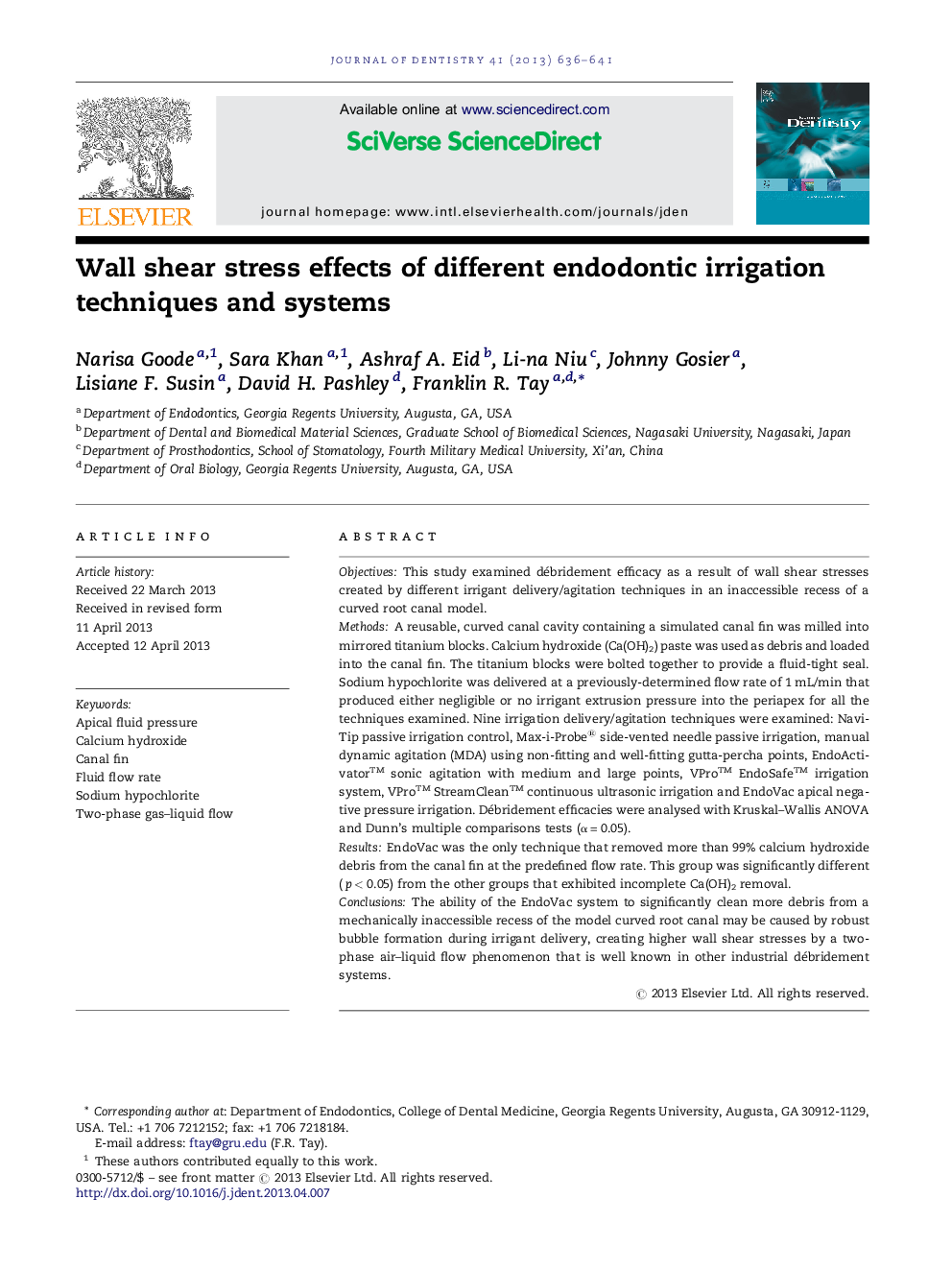| Article ID | Journal | Published Year | Pages | File Type |
|---|---|---|---|---|
| 6053225 | Journal of Dentistry | 2013 | 6 Pages |
ObjectivesThis study examined débridement efficacy as a result of wall shear stresses created by different irrigant delivery/agitation techniques in an inaccessible recess of a curved root canal model.MethodsA reusable, curved canal cavity containing a simulated canal fin was milled into mirrored titanium blocks. Calcium hydroxide (Ca(OH)2) paste was used as debris and loaded into the canal fin. The titanium blocks were bolted together to provide a fluid-tight seal. Sodium hypochlorite was delivered at a previously-determined flow rate of 1 mL/min that produced either negligible or no irrigant extrusion pressure into the periapex for all the techniques examined. Nine irrigation delivery/agitation techniques were examined: NaviTip passive irrigation control, Max-i-Probe® side-vented needle passive irrigation, manual dynamic agitation (MDA) using non-fitting and well-fitting gutta-percha points, EndoActivator⢠sonic agitation with medium and large points, VPro⢠EndoSafe⢠irrigation system, VPro⢠StreamClean⢠continuous ultrasonic irrigation and EndoVac apical negative pressure irrigation. Débridement efficacies were analysed with Kruskal-Wallis ANOVA and Dunn's multiple comparisons tests (α = 0.05).ResultsEndoVac was the only technique that removed more than 99% calcium hydroxide debris from the canal fin at the predefined flow rate. This group was significantly different (p < 0.05) from the other groups that exhibited incomplete Ca(OH)2 removal.ConclusionsThe ability of the EndoVac system to significantly clean more debris from a mechanically inaccessible recess of the model curved root canal may be caused by robust bubble formation during irrigant delivery, creating higher wall shear stresses by a two-phase air-liquid flow phenomenon that is well known in other industrial débridement systems.
